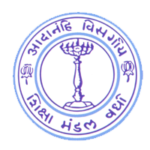Useful Websites
e- content courseware in UG subjects
Virtual Laboratories
LabXchange: LabXchange offers a collection of virtual labs and simulations across various scientific disciplines. It provides interactive experiments and activities for biology, chemistry, and more.
Website: https://www.labxchange.org/
Virtual Physics Lab: This website offers a range of virtual physics experiments and simulations. It allows students to explore concepts like motion, electricity, optics, and more.
Website: https://www.virtualphysicslab.org/
Virtual Earthquake: Virtual Earthquake is a simulation that allows students to explore seismic waves and earthquake behavior. It provides an interactive platform to study earthquakes and their effects.
Website: http://www.sciencecourseware.org/VirtualEarthquake/
PhET Interactive Simulations: https://phet.colorado.edu/
Virtual Chemistry Lab: https://chemcollective.org/vlabs
The Concord Consortium: https://concord.org/projects/
NASA Space Place: https://spaceplace.nasa.gov/menu/play/
Open Access Softwares
R: R is a programming language and software environment for statistical computing and graphics. It’s widely used in data analysis and visualization, making it a valuable tool for students in fields such as biology, chemistry, and physics.
Website: https://www.r-project.org/
Python: Python is a high-level programming language that is widely used in scientific computing. It’s versatile and can be used for data analysis, machine learning, and more.
Website: https://www.python.org/
ImageJ: ImageJ is an open-source image processing program that can be used for analyzing and manipulating images. It’s commonly used in fields such as biology and microscopy.
Website: https://imagej.nih.gov/ij/
Octave: Octave is a numerical computation software that is similar to MATLAB. It’s useful for solving linear and nonlinear problems, performing signal processing, and more.
Website: https://www.gnu.org/software/octave/
GROMACS: GROMACS is a molecular dynamics simulation software that can be used for studying biomolecules such as proteins, lipids, and nucleic acids. It’s widely used in biochemistry and biophysics research.
Website: http://www.gromacs.org/
GNU Octave: GNU Octave is a high-level programming language and environment for numerical computations. It’s particularly useful for solving mathematical problems and performing simulations. Website: https://www.gnu.org/software/octave/
Jupyter Notebook: Jupyter Notebook is an open-source web application that allows you to create and share documents containing live code, equations, visualizations, and narrative text. It’s widely used in data analysis, machine learning, and scientific research.
Website: https://jupyter.org/
OpenBabel: OpenBabel is a chemical toolbox designed to speak the many languages of chemical data. It can be used to convert, search, analyze, and visualize chemical information.
Website: http://openbabel.org/
Bioconductor: Bioconductor is an open-source and open-development software project for the analysis and comprehension of genomic data. It provides a wide range of tools and packages for genomics, transcriptomics, proteomics, and more.
Website: https://www.bioconductor.org/
BLAST: BLAST (Basic Local Alignment Search Tool) is a widely used bioinformatics program for comparing nucleotide or protein sequences against a database. It’s used for sequence alignment and identification of homologous sequences.

